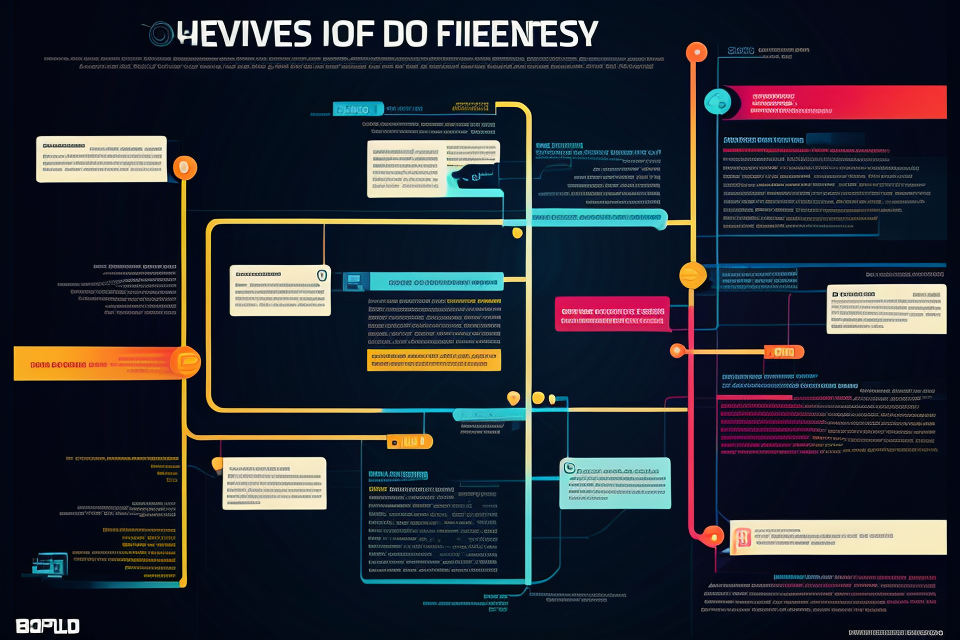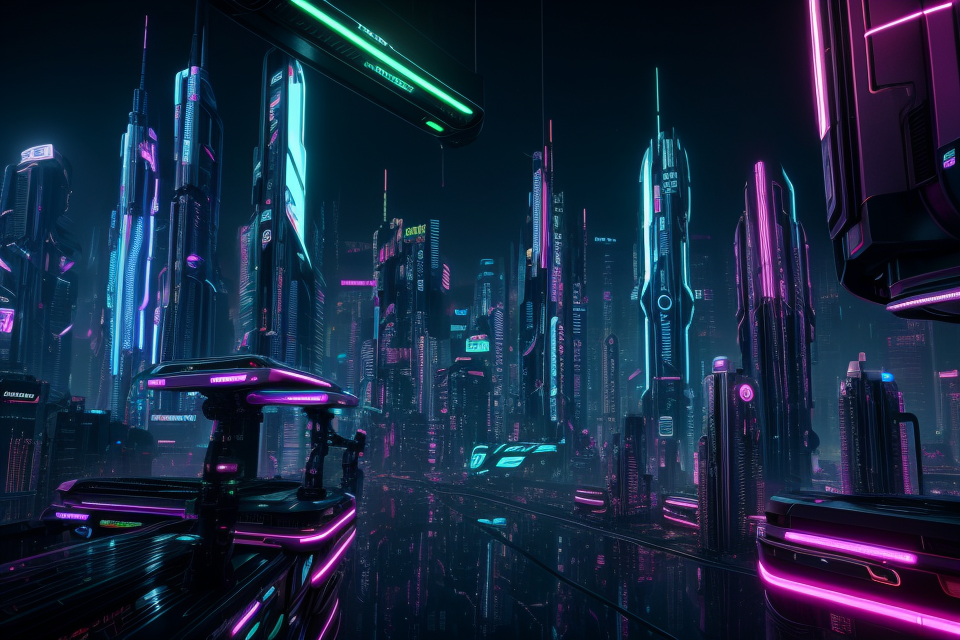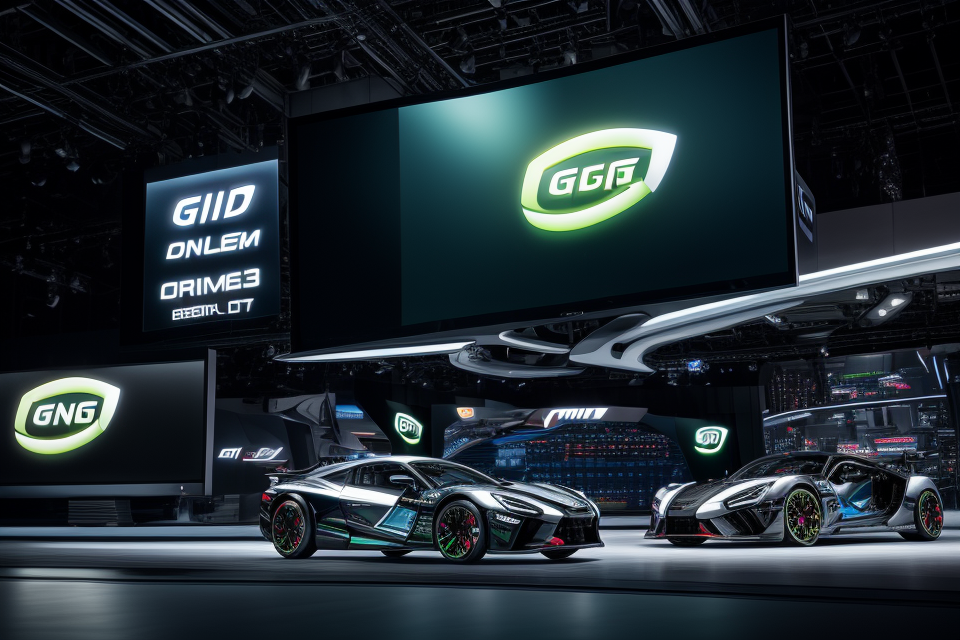
The GPU, or Graphics Processing Unit, has come a long way since its inception in the 1980s. Initially designed to handle simple 2D graphics, the GPU has evolved to become a powerful tool for a wide range of applications, from gaming to scientific simulations. This evolution has been driven by advances in technology and an increasing demand for more sophisticated graphics and computing capabilities. In this article, we will explore the history of the GPU, from its humble beginnings to the powerful, multi-core beasts of today, and examine how these changes have transformed the world of computing. Whether you’re a seasoned tech enthusiast or just curious about the inner workings of your computer, this article will give you a glimpse into the fascinating world of GPUs and their incredible journey from 2D to 3D.
The Origins of GPUs
The First GPUs
The history of GPUs can be traced back to the 1970s when the first graphics processing units (GPUs) were developed. These early GPUs were designed to handle the computational demands of basic 2D graphics, which were becoming increasingly important for computer applications such as scientific simulations, video games, and CAD (computer-aided design) software.
The first GPUs were simple devices that were integrated into the motherboard of a computer or were added as an add-on card. They were designed to offload the processing of 2D graphics from the CPU (central processing unit) to improve the overall performance of the system. These early GPUs were used primarily in specialized applications such as scientific simulations and industrial design.
The first GPUs had a significant impact on technology, as they allowed for the creation of more complex and realistic graphics in applications such as video games and CAD software. This led to an increase in the popularity of computer graphics and helped to drive the development of more advanced GPUs in the following years.
The Evolution of GPUs
The Early Years
The first GPUs were developed in the 1970s as a way to accelerate 2D graphics rendering. These early GPUs were designed to offload the work of rendering images from the CPU, which was the primary component responsible for graphics processing at the time.
The Transition to 3D
In the late 1980s and early 1990s, the gaming industry began to shift towards 3D graphics. This shift required a new generation of GPUs that were capable of rendering 3D images in real-time. Companies like NVIDIA and 3dfx pioneered the development of these new GPUs, which were designed specifically for 3D graphics rendering.
The Modern Era
In the modern era, GPUs have become an essential component of almost all computing devices, from smartphones to supercomputers. They are used not only for gaming and graphics, but also for a wide range of applications, including scientific simulations, artificial intelligence, and cryptocurrency mining.
The Future of GPUs
As technology continues to advance, GPUs are likely to play an even more important role in the development of new applications and technologies. They are expected to become even more powerful and efficient, enabling even more complex and realistic graphics and simulations. Additionally, the development of new technologies such as virtual reality and augmented reality is likely to drive the demand for even more advanced GPUs.
The Emergence of 3D Graphics
The Early Days of 3D Graphics
The Birth of 3D Graphics
The evolution of 3D graphics can be traced back to the 1960s, when the first 3D graphics hardware was developed. The Sketchpad, created by Ivan Sutherland in 1963, was one of the earliest examples of 3D graphics hardware. It used a light pen to draw 3D wireframe models in real-time.
The Impact of 3D Graphics on Technology
The introduction of 3D graphics had a profound impact on technology. It revolutionized the entertainment industry by enabling the creation of immersive 3D movies and video games. It also opened up new possibilities in fields such as architecture, engineering, and product design, where 3D models could be used to create more realistic and accurate visualizations.
The Challenges of Early 3D Graphics
Despite their potential, early 3D graphics faced several challenges. One of the biggest challenges was the lack of computing power. Early 3D graphics hardware was limited by the computing power of the time, which made it difficult to create complex 3D models in real-time. Additionally, the cost of 3D graphics hardware was high, making it inaccessible to many users.
The Development of 3D Graphics Standards
To overcome these challenges, 3D graphics standards were developed. The first standard, called the “Golden Object,” was created in 1968 by a group of researchers at the University of Utah. It defined a standard format for 3D objects, which allowed different 3D graphics systems to share 3D models. This was a significant breakthrough, as it enabled 3D graphics to be used across different platforms and applications.
The Emergence of 3D Graphics Software
In addition to hardware, 3D graphics software also emerged during this time. One of the earliest examples was Sketchpad, which was created by Ivan Sutherland in 1963. It allowed users to draw 3D wireframe models in real-time using a light pen. Other software programs included SketchCAD, which was used for designing mechanical parts, and DAC-1, which was used for creating 3D wireframe models of buildings.
Overall, the early days of 3D graphics marked a significant turning point in the history of computing. The development of 3D graphics hardware and software opened up new possibilities for immersive visual experiences, and laid the foundation for the modern 3D graphics industry.
The Advancements in 3D Graphics
The Beginning of 3D Graphics
The development of 3D graphics can be traced back to the 1960s, when the first 3D graphics hardware was created. The Sketchpad, a device developed by Ivan Sutherland, was one of the first devices to create 3D graphics using a computer. The Sketchpad used a light pen to draw 3D models, and it allowed users to manipulate the objects in three dimensions.
The Arrival of 3D Graphics in Gaming
The 1970s saw the emergence of the first 3D graphics video games, such as the game “Spacewar!” developed at MIT. However, these early games used simple wireframe models and were not very sophisticated.
The Development of 3D Graphics APIs
The 1980s saw the development of the first 3D graphics APIs, such as the OpenGL API and the Direct3D API. These APIs allowed game developers to create more sophisticated 3D graphics and enabled the development of 3D games that could compete with arcade games.
The Emergence of 3D Accelerators
The 1990s saw the emergence of 3D accelerators, which were specialized hardware chips designed to accelerate the rendering of 3D graphics. The first 3D accelerator was the 3Dfx Voodoo, which was released in 1996.
The Evolution of 3D Graphics in the 21st Century
In the 21st century, 3D graphics have continued to evolve, with the development of more sophisticated hardware and software. The emergence of new technologies, such as real-time ray tracing and virtual reality, has enabled the creation of even more realistic 3D graphics.
The Impact of Advancements in 3D Graphics
The advancements in 3D graphics have had a significant impact on the gaming and graphics industries. 3D graphics have enabled the creation of more immersive gaming experiences, as well as more realistic graphics in movies and other forms of media. The advancements in 3D graphics have also enabled the development of new technologies, such as virtual reality, which have the potential to revolutionize the way we interact with computers and with each other.
The Modern Era of GPUs
The Evolution of Modern GPUs
The development of modern GPUs has been a gradual process that has seen significant advancements over time. The evolution of modern GPUs can be traced back to the early 2000s when the first GPUs were introduced. Since then, there have been numerous improvements and innovations that have transformed the GPU market.
One of the most significant developments in the evolution of modern GPUs was the introduction of programmable shaders. This innovation allowed developers to write custom code for the GPU, enabling them to create more complex graphics and animations. This development led to a significant increase in the demand for GPUs, particularly in the gaming industry.
Another important development in the evolution of modern GPUs was the introduction of CUDA (Compute Unified Device Architecture) by NVIDIA. CUDA enabled developers to use the GPU as a general-purpose computer, rather than just for graphics rendering. This innovation opened up new possibilities for GPUs, such as scientific simulations and high-performance computing.
The rise of virtual reality (VR) and augmented reality (AR) has also played a significant role in the evolution of modern GPUs. As VR and AR technologies became more prevalent, there was a need for more powerful GPUs that could handle the demanding graphics requirements of these applications. This led to the development of GPUs with more processing power and higher memory capacity.
In recent years, there has been a growing interest in deep learning and artificial intelligence (AI). This has led to the development of specialized GPUs that are optimized for AI workloads. These GPUs are designed to accelerate machine learning algorithms and provide more efficient processing for large datasets.
Overall, the evolution of modern GPUs has been driven by the need for more powerful and efficient graphics processing. As technology continues to advance, it is likely that we will see even more innovations in the world of GPUs, with new applications and use cases emerging in the future.
The Current State of GPUs
In the current era of GPUs, the market is flooded with a variety of models from different manufacturers, each boasting impressive specifications and capabilities. The NVIDIA GeForce and AMD Radeon series are two of the most popular lines of GPUs available today. These graphics cards are designed to meet the demands of gamers, content creators, and professionals in various industries.
The impact of current GPUs on gaming and graphics is undeniable. With their ability to render complex graphics and animations at high resolutions, modern GPUs have revolutionized the gaming industry. The latest games are designed to take advantage of the power of these graphics cards, offering stunning visuals and immersive experiences. In addition, GPUs are also used in various other applications, such as video editing, 3D modeling, and virtual reality.
The role of current GPUs in the development of technology cannot be overstated. With their advanced capabilities, they are used in a wide range of fields, including artificial intelligence, machine learning, and scientific simulations. In addition, they are also used in the development of self-driving cars, drones, and other autonomous systems. The use of GPUs in these areas has greatly accelerated the pace of technological advancement and has enabled the development of new technologies that were previously thought impossible.
Despite their impressive capabilities, current GPUs are not without their limitations. One of the biggest challenges facing GPUs today is their high power consumption, which can lead to increased energy costs and reduced lifespan. Additionally, they can be expensive, making them inaccessible to some users.
Overall, the current state of GPUs is one of rapid evolution and constant improvement. As technology continues to advance, it is likely that we will see even more powerful and capable GPUs in the future, capable of driving even more impressive visuals and enabling new applications and industries.
The Future of GPUs
The Future of 3D Graphics
Advancements in 3D Graphics
One of the most significant advancements in 3D graphics is the development of real-time ray tracing. This technology allows for the creation of incredibly realistic lighting and shadows in 3D environments, which was previously only possible through offline rendering. Ray tracing is already being used in games like Battlefield V and is expected to become even more prevalent in the future.
Another area of advancement is in the field of virtual reality (VR). As VR technology continues to improve, the demand for more realistic and complex 3D graphics will only continue to grow. This will require GPUs to become even more powerful and efficient in order to handle the demands of VR environments.
Role of 3D Graphics in Future Technology
The role of 3D graphics in technology is only going to become more significant in the future. As VR and augmented reality (AR) become more prevalent, the need for realistic and high-quality 3D graphics will only continue to grow. Additionally, 3D graphics are becoming increasingly important in fields like medicine, where they are being used to create more accurate and detailed medical imaging.
As technology continues to advance, it is likely that we will see even more innovative uses for 3D graphics. From creating realistic virtual environments for gaming and entertainment to improving safety in industries like construction and transportation, the potential applications for 3D graphics are vast and varied.
In conclusion, the future of 3D graphics is bright and full of possibilities. As technology continues to advance, it is likely that we will see even more powerful and realistic 3D graphics, with applications in everything from entertainment to medicine. The role of GPUs in driving these advancements cannot be overstated, and it will be exciting to see what the future holds for this technology.
The Future of GPUs
The future of GPUs and their impact on technology
GPUs have come a long way since their inception in the 1980s, and their impact on technology has been immense. With the increasing demand for real-time rendering, virtual reality, and machine learning, the future of GPUs looks promising. The next generation of GPUs is expected to be more powerful, efficient, and capable of handling complex tasks.
Advancements in GPUs that are yet to come
One of the most significant advancements in GPUs is the development of neural processing units (NPUs). NPUs are designed specifically for artificial intelligence and machine learning workloads, providing better performance and energy efficiency than traditional GPUs. Another advancement is the integration of quantum computing, which has the potential to revolutionize the computing industry.
The role of GPUs in the future of technology
GPUs will continue to play a crucial role in the future of technology, with applications in fields such as healthcare, transportation, and entertainment. In healthcare, GPUs can be used for medical imaging and simulations, while in transportation, they can be used for autonomous vehicles and traffic management. In entertainment, GPUs will be essential for the development of virtual and augmented reality applications.
As technology continues to evolve, the demand for more powerful and efficient GPUs will only increase. The future of GPUs looks bright, and their impact on technology will only continue to grow.
FAQs
1. What is a GPU?
A GPU, or Graphics Processing Unit, is a specialized type of processor designed to handle the rendering of images and graphics. Unlike a CPU, which is designed to handle a wide range of tasks, a GPU is optimized specifically for graphics processing.
2. When was the first GPU developed?
The first GPU was developed in the 1980s by a company called Pixar. It was designed to handle the rendering of 3D graphics for the film industry.
3. How has the GPU evolved over time?
The GPU has evolved significantly over time, becoming more powerful and capable of handling an increasingly wide range of tasks. Early GPUs were primarily used for gaming and 3D rendering, but today’s GPUs are used for a wide range of applications, including scientific simulations, machine learning, and cryptocurrency mining.
4. What are some of the key milestones in the evolution of the GPU?
Some of the key milestones in the evolution of the GPU include the introduction of programmable shaders in the 1990s, the development of hardware accelerated ray tracing in the 2000s, and the emergence of deep learning and artificial intelligence in the 2010s.
5. How has the evolution of the GPU impacted the gaming industry?
The evolution of the GPU has had a significant impact on the gaming industry, enabling the development of more realistic and immersive games. Early games were simple 2D affairs, but today’s games are highly complex 3D experiences that require powerful GPUs to run smoothly.
6. What are some of the current trends in GPU technology?
Some of the current trends in GPU technology include the development of specialized GPUs for AI and machine learning, the emergence of real-time ray tracing, and the increasing use of GPUs for cryptocurrency mining.
7. What is the future of the GPU?
The future of the GPU is likely to involve continued improvements in performance and capabilities, as well as the development of new applications for this technology. As AI and machine learning continue to advance, the GPU is likely to play an increasingly important role in these fields. Additionally, the use of GPUs for cryptocurrency mining is likely to continue to grow, although it remains to be seen how this will impact the overall demand for GPUs.


